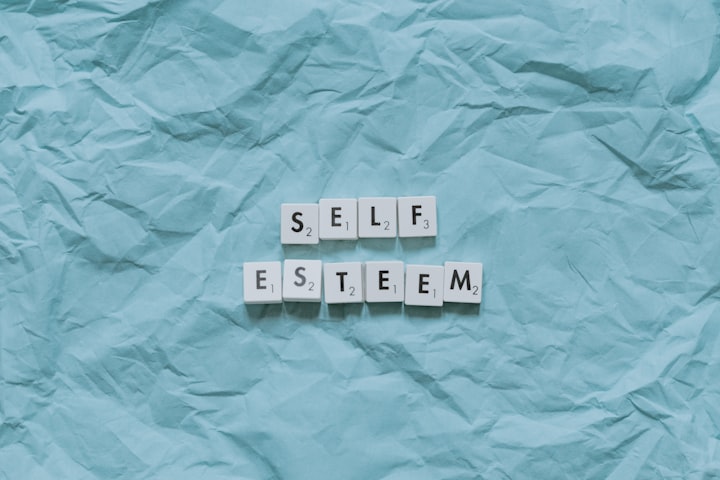
Abstract
Some have suggested that schools’ concern for children’s moral development and self-esteem is misplaced and that the school’s business is to teach knowledge and cognitive skills. While content knowledge is essential for passing standard state exams, content knowledge alone does not make a well-rounded and empathic adult. This level of instruction has been part of the school environment since the dame schools of Puritan America and the Latin Grammar schools when such skills were taught in a class young men received as a grade. While such courses may no longer be available, children still spend most of their lives under the care of educators and within the school environment. While a school may only be one building, it is a micro-community meant to represent the whole of the rest of the world. Students need to be morally aware and have the self-resilience and confidence to face the world after graduation. Because of this, the teachers and school administration must be able to develop some level of these skills while they have their students.
Introduction
Part of teachers’ responsibility, purposefully or not, is to create confident and morally wise future members of society. Since the first educational lessons, taught from the small living spaces of local women in the Puritan villages, the schoolhouse has always been a place we sent our children to show they could learn “The Three R’s; Reading, Writing, and Arithmetic.” However, it is also a place we have sent our students so they can learn how to behave in our society and be confident and competent. Unlike the olden days, schools today are growing more and more focused on curriculum and ensuring our students are well-versed in the content we deem necessary for them to know. While the curriculum is undoubtedly an essential aspect of the classroom, developing a student’s moral code and sense of self-esteem is equally important.
When education in the United States first began in the small living spaces of colonial homes, one of the first lessons students learned was how to be morally upstanding in the eyes of the community and God. (Carjuzaa & Kellough, 2017, p. 2) Education started in the home, and parents taught their children enough to read the bible and the skills of whatever trade their parents worked. Later, dame schools came to be the place to send children to teach more specialized reading, writing, and basic math, but the emphasis on being a moral citizen was still considered of great importance. Morality can be viewed in two ways:
- Descriptively: to refer to certain codes of conduct put forward by a society or a group (such as a religion) or accepted by an individual for their behavior, or
- Normatively: to a code of conduct that, given specified conditions, would be put forward by all rational persons. (Gert & Gert, 2016)
This paper focuses on the former, Descriptive Morality, which is on understanding what makes something right or wrong and how the world interacts. Lawrence Kohlberg was one such person to study Descriptive Morality to learn how an individual developed their sense of right and wrong. His focus was not on the action but on the reasoning behind it. As educators, we desire our students to grow into morally well-adjusted adults who know how to care for one another and do the right thing. However, we, as a community, also have fallen into a paradox where the school is and is not responsible for teaching today’s youth how to be morally upstanding or self-confident. Even though how schools teach morality is challenging to regulate and can be problematic at times, this is one of the best places for our students to learn these skills. They spend most of their developmental stages in school, surrounded by people from all walks of life and confronted by many conflicts that test their character. As they grow in their cognitive abilities, they will, too, grow in their ability to understand more complex moral problems. Schools should be considered a haven for developing students to mold and experiment with their morals before being sent into the world as adults. According to Kohlberg, people pass through six stages of moral reasoning as they develop. Kohlberg’s study was similar to Piaget’s, except that he probed further into an individual’s responses to a series of moral dilemmas and discovered that a child could enter or pass certain levels of understanding and reasoning at earlier ages. (Slavin, 2018 pg. 49) Kohlberg had six stages in his theory, each stage organized into three levels:
Stage two is when children start to develop a sense of morality. While still looking out for themselves, they have developed an idea that other people also have needs. They enter this stage while attending school, and while specific skills can be introduced and taught in the home, more social repercussions occur while the student is in class. They have to learn to share because if they do not, their classmates will not play with them anymore. They have to learn not to lie because if they do, their classmates will not trust them, and at these early stages, students are learning to “do unto others as they would have done unto themselves.” (Slavin, 2018, pg. 49) In later years, these skills become more fine-tuned, where the individual does not need that reciprocation but order and a need to follow the law to be an upstanding citizen. Then, there is a realization that the laws and values of a society are arbitrary and particular to that society.
In a quote from Judith Harris, author of The Nurture Assumption: Why Children Turn Out the Way They Do, teachers play an intriguing role in these stages of development that could affect their students for the rest of their lives. In the section of her book that discusses classroom environment from the children’s perspective, she gives an example of the subtleties of how children direct and interact to, in a way, govern the experience for the day. One example was a child walking to the bookshelf; How they got there determined how they would direct the class and, in turn, how the teacher would react. They could make a show of walking in front of the class, thus telling their opinion on the lesson. The teacher can then respond, as they are, according to Harris, the ‘other,’ the “foil without which the little acts of defiance would be pointless.” (Harris, 2009 pg. 226) The teacher can either make a martyr out of the misbehaver or address the behavior in a calm fashion that helps establish order in the classroom. Educators who can move with the students and take those moments of defiance with grace can unintentionally pass on these qualities to their students. Those moments in which the classroom seems to test the teacher can either establish or tear down a teacher’s leadership role in their students’ eyes. A good leader will gain the following of the classroom with little trouble and pass on these traits for their students to mimic years down the line. While parents and family can also influence their children in this way, as mentioned above, children spend most of their daily lives in the hands of a school. Thus, the school environment will help mold the students’ ideals and moral behavior more. As also mentioned in Harris’s book, leaders can influence a group of people in three ways:
- Group norms
- Group boundaries
- Group image
A gifted teacher who can show good leadership skills can affect the classroom environment significantly. They can prevent a class of diverse people from splitting into groups and bringing them together to form a collective whole. Following an anecdote in Harris's book, one example was that in classrooms where one teacher had developed the classroom into a whole, students who had been behind the others began to do better because their peers were cheering them on for every achievement they made. Misbehaviors were criticized, and good behavior or improvement from an individual was remarked as a success for the whole.
Classroom environments comparable to this can vastly boost a child's self-esteem. Similar to a child's view on morality and what is right and wrong, a child's view of their self-worth is not a constant. As students grow and develop, so does their sense of self; as these changes occur, there may be a viewable change in their academic performance. However, studies show that the correlation between self-esteem and academic achievement may be linked to the student's competency in the subject. (Slavin, 2018) As students develop their skills in a specific subject, so will their confidence in their abilities. In this case, the teacher's position here is to encourage their students and praise them for the efforts shown in their academic performance. This encouragement is essential as the student moves into the higher grade levels. Students in the early stages of development tend to view themselves in a more positive light. However, as they grow older and closer to the secondary grades (6 - 9), they start to notice which of their peers seem to have more skill than they do and will compare themselves to others. The results of these comparisons can lead to poor behaviors such as attention-seeking, dishonesty, aggression, or even perfectionism. The student may have trouble turning in assignments because the work is not 'perfect.' ("Identifying low self-esteem thoughts and behaviours," 2016) These pattern behaviors not only affect the academic achievement of the individual student but could also affect others in the classroom. While the individual student's home environment could influence their behaviors, they spend most of their time around other adults who are not their parents. The environment of the classroom, and school as a whole, can affect how that individual performs academically and how they view their self-competence.
A long line of history has led us to where we are today. Most of us teachers want to see our students confident, happy and developing into moral human beings. In a way, all teachers are the second parents to hundreds, if not thousands, of students throughout our careers. Because of this, we have the responsibility and privilege to help each cycle of new students grow academically, emotionally, and morally. While parents or the government may not always understand or appreciate the hard work teachers and school administration put into making sure the students feel appreciated and have a moral compass, there should still be an effort. Schools can build self-esteem by praising their students' efforts, applauding their achievements, and building a community that applauds them when they overcome a hurdle that previously held them back. It is also part of the school's duty to impart lessons and allow discussion so students can determine right from wrong and become empathic adults.
References
Carjuzaa, J., & Kellough, R. D. (2017). Teaching in the Middle and Secondary Schools. Boston: Pearson.
Gert, B., & Gert, J. (2016, February 8). The Definition of Morality. Retrieved from https://plato.stanford.edu/entries/morality-definition/
Harris, J. R. (2009). The Nurture Assumption: Why Children Turn Out the Way They Do. New York: Free Press.
Identifying low self-esteem thoughts and behaviours. (2016, October 17). Retrieved from https://www.counselling-directory.org.uk/memberarticles/identifying-low-self-esteem-thoughts-and-behaviours
Kohlberg’s Stages of Moral Development. (2020, February 14). Retrieved from https://www.psychologynoteshq.com/kohlbergstheory/
Mueller , L. (2020). Education, Philosophy, and Morality: Virtue Philosophy in Kant. Eidos. A Journal for Philosophy of Culture, 3(4), 114–137. doi: 10.14394/eidos.jpc.2019.0045
Slavin, R. E. (2018). Educational Psychology: Theory and Practice. NY, NY: Pearson.
About the Creator
R.O.A.R.
High school English teacher who enjoys writing as a hobby. I do hope to get published one day, but for now I'm just having fun and hoping to learn some new tricks.






Comments
There are no comments for this story
Be the first to respond and start the conversation.